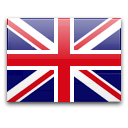
James Clarke Hook
Though his father had faced bankruptcy, James Clarke Hook (1819–1907) nevertheless managed to paint himself into country-gentlemanhood, becoming famous for his landscapes of British coastal scenes and his ability to evoke not just the sights but also the sounds and even the smell of the sea.
James Clarke Hook, Juliet McMaster’s lively biography of the brilliant but underappreciated Victorian painter, brings the reader through Hook’s rigorous training at the Royal Academy Schools, his travelling studentship in Florence and Venice, and his work as a historical painter, to the discovery of his métier as a painter of contemporary rural and coastal scenes. Part of the secret of Hook’s success was his resolution to paint the final large canvas of his seascapes onsite, braving wind and weather – for which he invented an easel that was adaptable to uneven terrain. McMaster’s research led her to retrace the painter’s footsteps to the rocky headlands and sheltered bays where, over a hundred years ago, Hook had set up his easel to capture the tang of sea. McMaster connects Hook, an academician for half a century, with the major figures and movements of Victorian art – including the Pre-Raphaelites John Everett Millais and Holman Hunt, the etcher Samuel Palmer, and the painter and sculptor G.F. Watts.
James Clarke Hook worked alongside the fishermen and rural families who populate and enliven his canvases; this book reinvigorates our understanding of his artistic process and unique sense of place.


